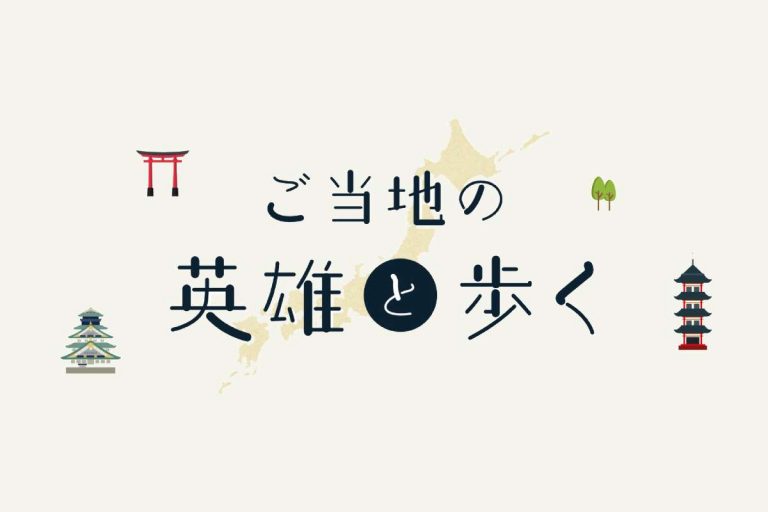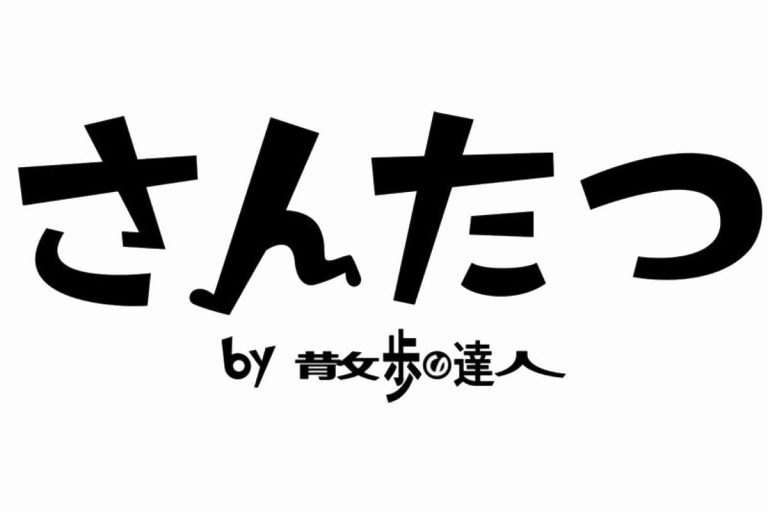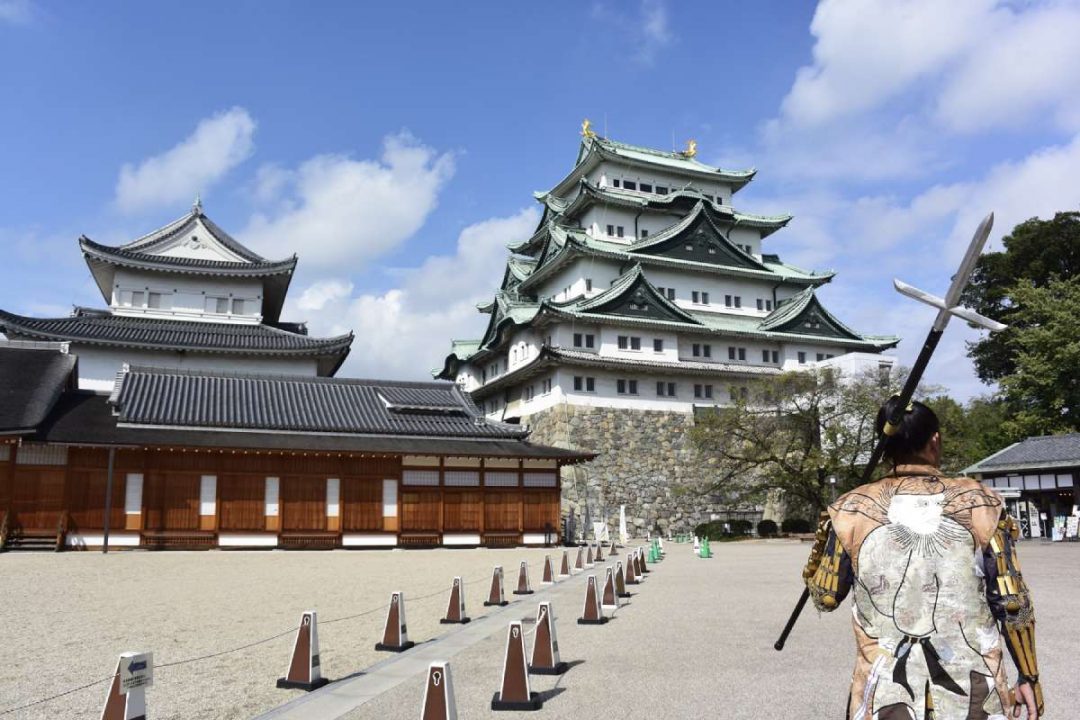
- TOP
- Interests
- Culture & History
- Castle town & Post town
- Come Visit Nagoya Castle!!
Highlights Introduced by Toshiie Maeda of the Nagoya Omotenashi Bushotai
Come Visit Nagoya Castle!!
Highlights Introduced by Toshiie Maeda of the Nagoya Omotenashi Bushotai
Walk the Town with a Local Hero—–.
To truly understand a town’s charms, ask those who bring it to life!
In this article we’ll be introducing history and culture known only to those who are deeply rooted in the community.
This time, we will be guided around Nagoya Castle by a warrior from Nagoya.
-
We are the Nagoya Omotenashi Bushotai!
Do you know me?
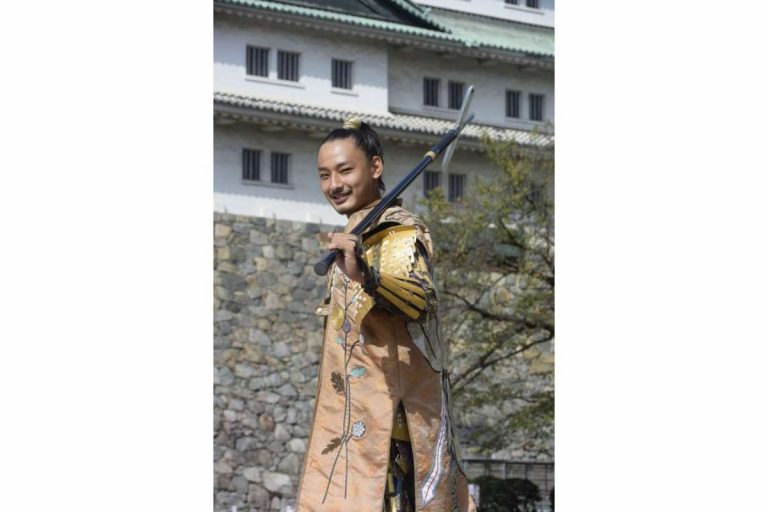
I was also known by the nickname “Mataza of the Spear”! I’m a master of the spear from Nagoya.
I am Toshiie Maeda (Matazaemon) of the Nagoya Omotenashi Bushotai, and it is I who shall be your guide on this journey!
We, the Nagoya Omotenashi Bushotai, are a group of samurai made up of six army generals with ties to Nagoya and four jingasa-tai retainers who support us. Our mission is to promote Nagoya’s appeal to the world and turn it into the world’s greatest tourist city.
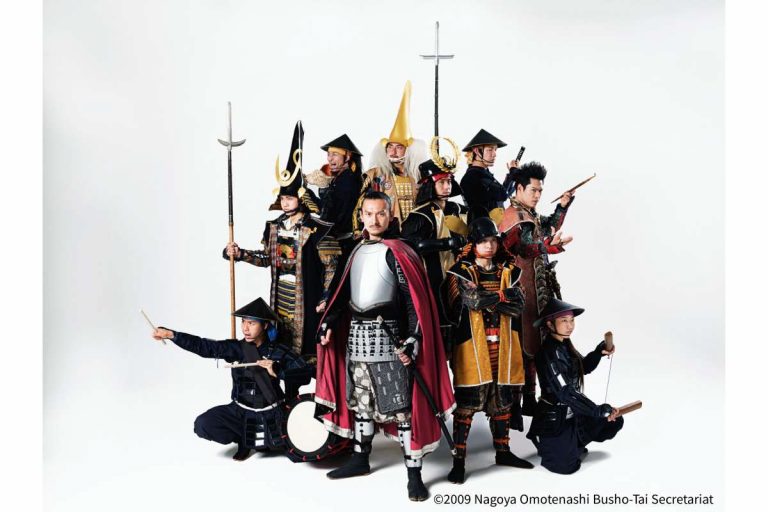
In addition to welcoming guests and performing at Nagoya Castle, we take part in various events and tirelessly wage battle to convey the charms and appeals of Nagoya and the Warring States period through modern-day contraptions like television and social media.
This time, I, Toshiie Maeda, shall guide you through the highlights of Nagoya Castle!
“Owari Nagoya stands because of its castle.”
You may not have heard this line before, but it is from Ise Ondo, a popular folk song from the Edo period. The song highlights how the dazzling splendor of Nagoya Castle stood at the heart of prosperity in Owari, what we now know as Nagoya.
Today, Owari, that is to say Nagoya, serves as a foundation for cutting-edge technology and is known as a hub of commerce and industry. Yet it is also a city rich in historical and cultural heritage, with many significant sites, foremost of which is Nagoya Castle itself. Let us now explore some tourist destinations connected to the history of Nagoya and its iconic castle.
Now then,Let us go forth!
History of Nagoya Castle
Nagoya Castle was built in 1610 under the command of Ieyasu Tokugawa, the unifier of the realm, who had emerged victorious after a series of great battles. The construction was carried out by feudal lords from across the country.
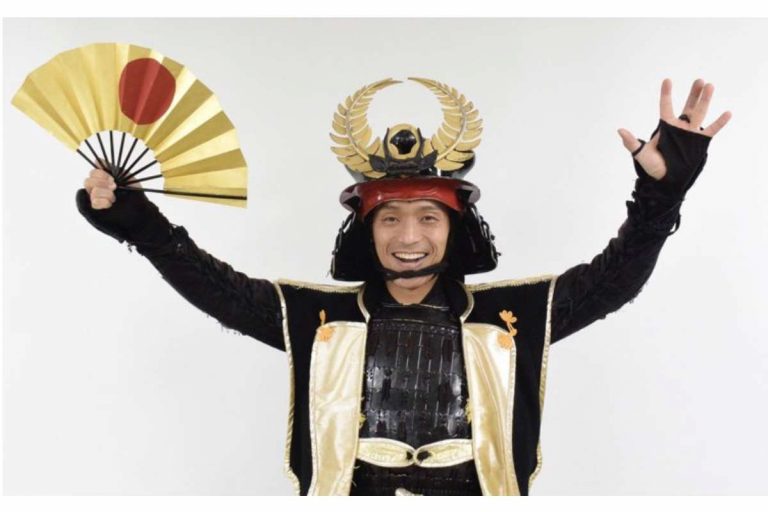
Lord Ieyasu Tokugawa of the Nagoya Omotenashi Bushotai.
This is what is famously known as a tenkabushin!
Tenkabushin refers to large-scale construction projects ordered by Tokugawa, such as castle construction, river flood control, and the reconstruction of temples and shrines, which were all carried out by the feudal lords under his authority.
These projects were undertaken in a way that surrounded the castles of the former ruling Toyotomi clan, and they served several purposes, such as demonstrating the authority of the Tokugawa government, and compelling newly-subjugated lords to spend their wealth.
As someone who supported the former leadership of the Toyotomi clan, I cannot help but feel uneasy, but Lord Tokugawa is indeed formidable.
I’ve digressed a bit, but among the many castles built through these tenkabushin projects, the greatest of them all is right here, Nagoya Castle!
It is one of the largest castles in all of Japan.
Seeing is believing.
Let us now explore the interior of the castle!
-
Toshiie Maeda's Tour of Nagoya Castle
Nagoya Castle’s main gate
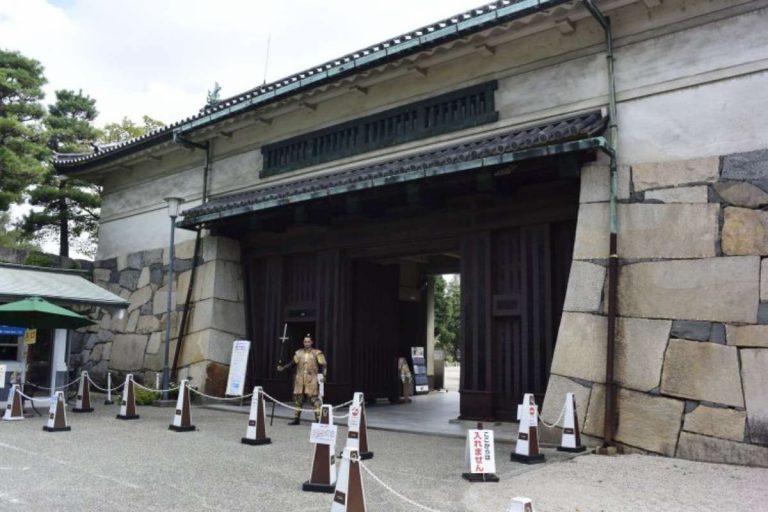
Nagoya Castle’s main gate, the entrance to the castle.
The first thing to greet all who visit Nagoya Castle is the castle’s main gate.
This is a magnificent yagura-mon turret gate, wouldn’t you say?
But in fact, this gate was not originally built for Nagoya Castle – it was relocated here from Edo Castle. Though it was later destroyed during World War II, it was rebuilt along with the castle keep and so it stands before us today!
What’s more, the stone wall supporting this main gate was built by none other than my son, Toshitsune Maeda!
Even though it is my own son’s work, I must say, what a splendid achievement!
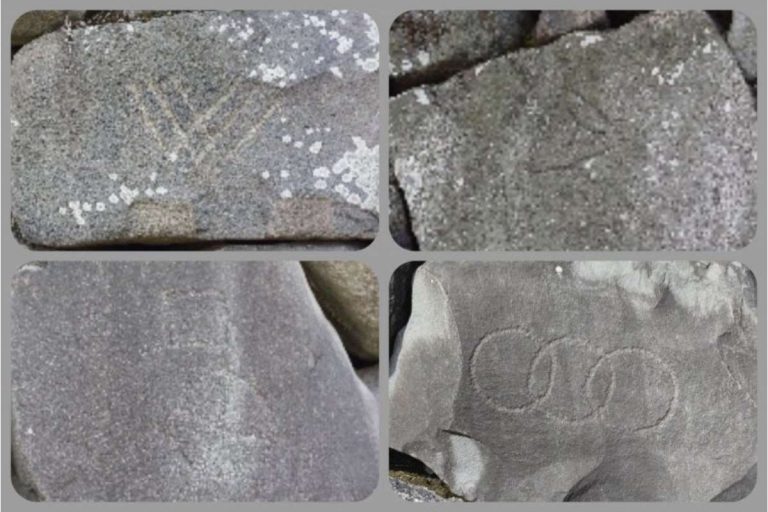
And now, I want you all to take special note of something that defines Nagoya Castle itself: the presence of engraved marks known as koku-mon!
These koku-mon engraved marks were added to identify which feudal lord had prepared each stone. They have been preserved just as they were in those days. You’ll see countless such markings throughout Nagoya Castle, and seeking them out as you walk is part of the fun!
Castle treasure hall museum
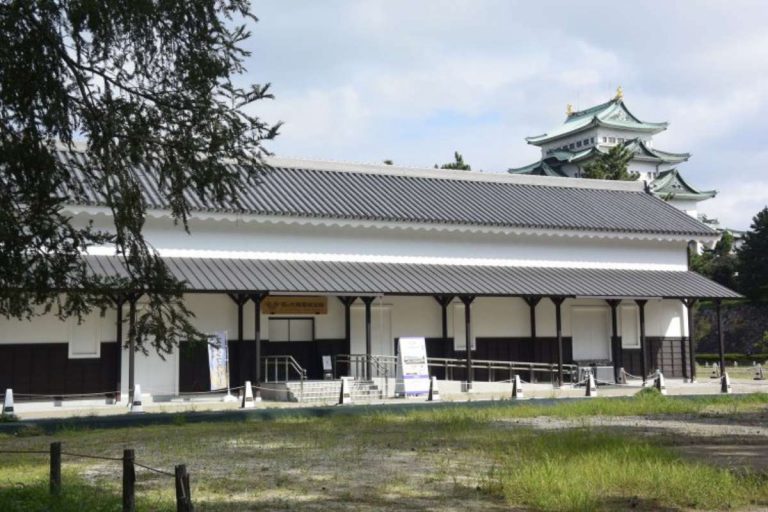
Nishinomaru Okura Johokan Museum.
From the main gate, if you head toward the Ni-no-maru western bailey, you’ll arrive at the Nishinomaru Okura Johokan Museum, or “castle treasure hall museum,” a brand-new highlight of Nagoya Castle that opened in 2021!
It features a reconstructed exterior modeled after the old rice storehouse that once stood there, and now functions as an exhibition hall.
In addition to permanent exhibits such as the shachihoko tiger-headed roof ornaments that survived the fires of World War II, the museum also hosts rotating special exhibitions, so what you’ll see depends on when you visit!
Seinan-sumi yagura watchtower turret
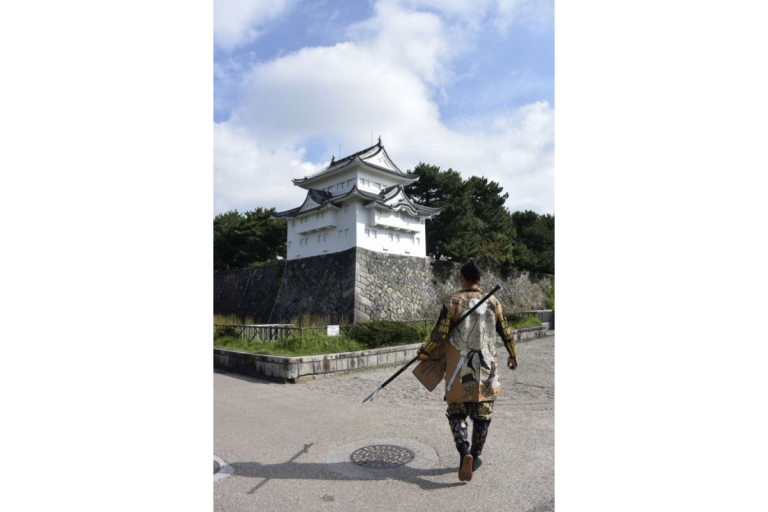
Next comes Nagoya Castle’s Seinan-sumi yagura, or southwest corner watchtower turret. This is one of the original turrets that was built at the time of the castle’s construction and has been designated as an Important Cultural Property of Japan.
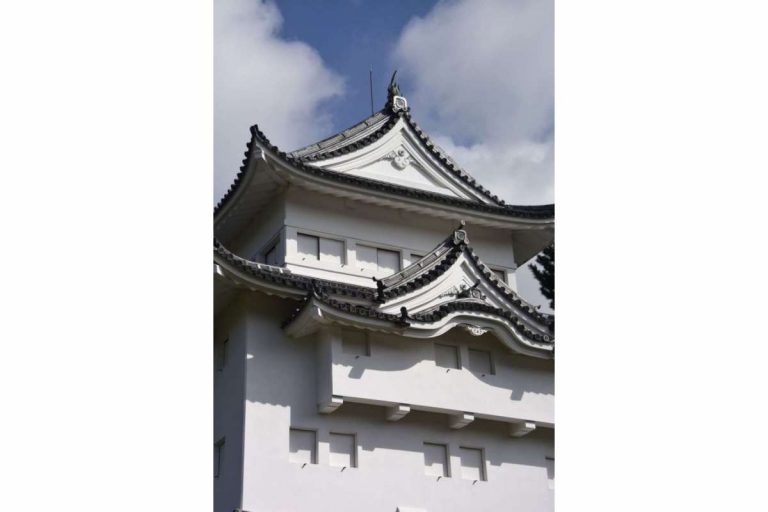
Can you spot the chrysanthemum crest on the onigawara roof tile?
During restoration work carried out under the supervision of the Imperial Household Ministry in the Taisho era (1912 to 1926), a chrysanthemum crest, the symbol of the Imperial family, was added to the onigawara roof tiles.
There are three original turrets still standing within the castle grounds, but the Seinan-sumi yagura watchtower turret is the only one that bears the chrysanthemum crest!
Comparing the watchtower turrets and spotting the differences between them is another enjoyable way to explore.
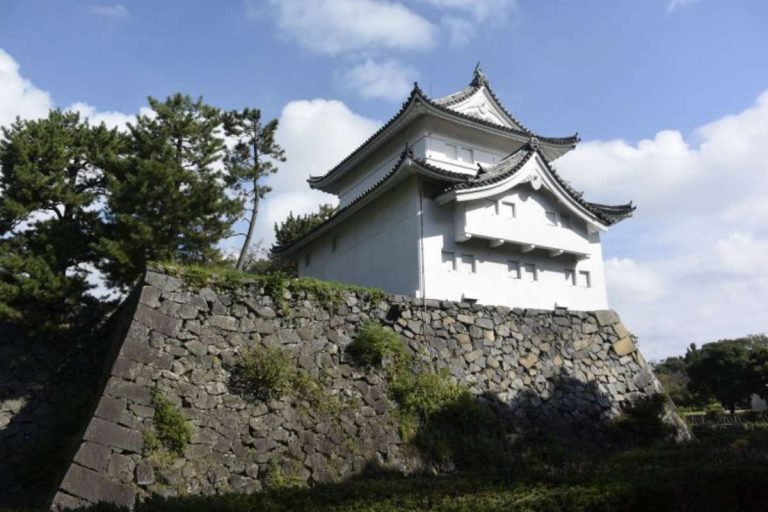
As you continue walking, you’ll come to the Tounan-sumi yagura, or southeast corner watchtower, which is also one of the original turrets and likewise designated as an Important Cultural Property!
If you look closely at the onigawara roof tiles, you’ll notice that while the ones on the Seinan-sumi yagura feature the chrysanthemum crest, the ones on the Tounan-sumi yagura bear the hollyhock crest of the Tokugawa family!
These watchtower turrets are normally closed to the public, but during special periods such as festivals at Nagoya Castle, you may be allowed to go inside. If you wish to see the interior, aim to visit during one of those times!
Now then, shall we head to the Hommaru main keep?
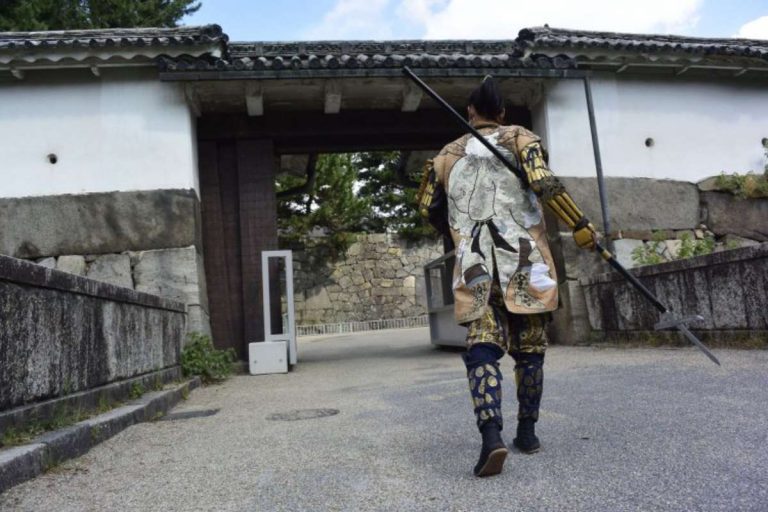
…or so I thought, but I’m feeling quite hungry…
and you can’t fight on an empty stomach!
-
Meal in Nagoya, they think of Nagoya meshi!
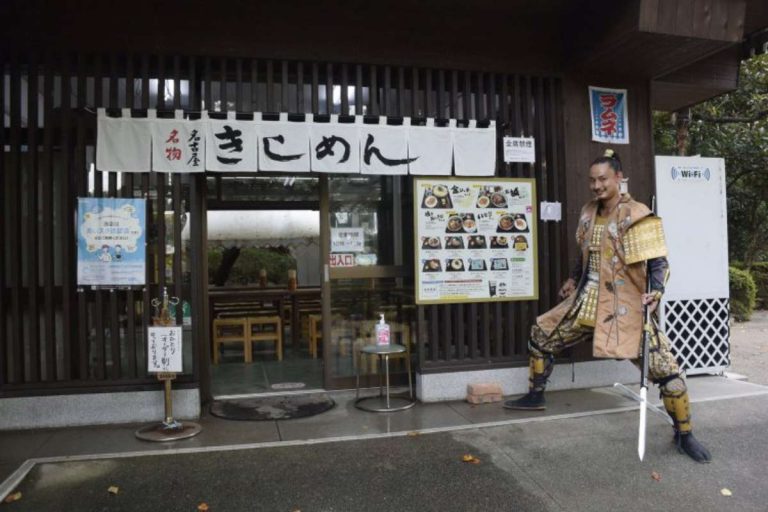
Before we enter the Hommaru main keep, let’s stop here and fill our bellies!
And when Japanese people think of a meal in Nagoya, they think of Nagoya meshi!
Believe it or not, you can actually eat Kishimen noodles inside the castle!
What’s more, this restaurant is so popular, that some visitors come all the way to the castle just to eat their Kishimen noodles!
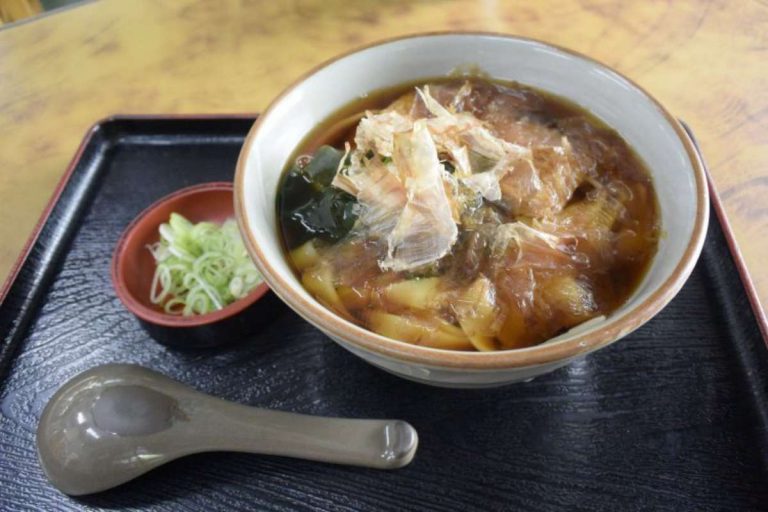
The noodles are flat, which allows them to soak up the flavor well. Truly delicious!
As for the origins of kishimen noodles, there are various stories: one says that during the construction of Nagoya Castle, the noodles were flattened so they would cook faster and were served with pheasant meat, thus the name “kiji-men” (pheasant noodles). Another says the dish came from Kishu and was originally called “Kishu-men.”
While their true origins remain a mystery, there are no doubts about their taste.
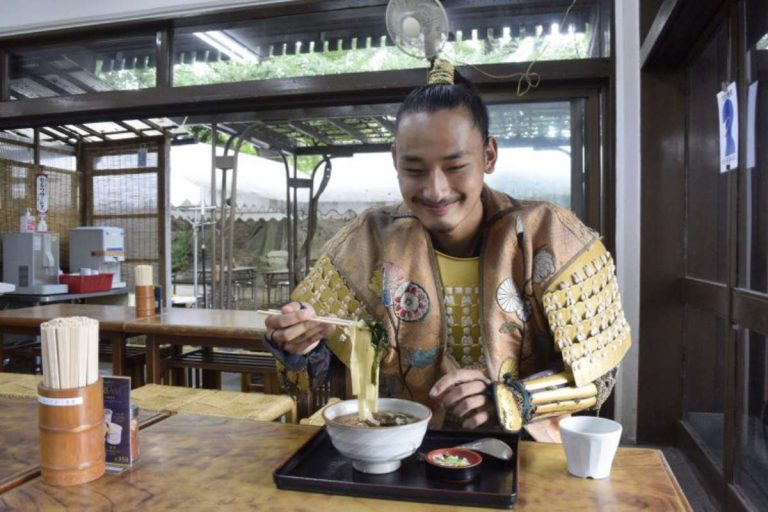
It’s very delicious!!
On cold days, warm yourself up with a piping hot bowl, and on hot days, cool down with chilled koro-kishimen.
It’s the perfect place to stop for a break and a bite to eat during your stroll around Nagoya Castle!
And now that we’ve eaten our fill, let’s continue our tour of the castle!
-
A truly world-class masterpiece!
Omote Ni-no-mon gate
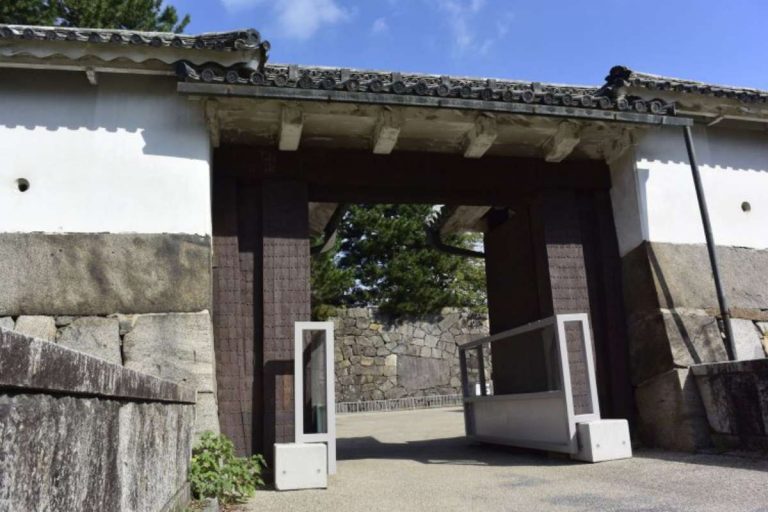
The main entrance to the Hommaru main keep, the Omote Ni-no-mon gate, is, like the watchtower turrets mentioned earlier, an original structure that has stood for 400 years and is designated as an Important Cultural Property.
In those days, it was common to leave gaps in wooden gates and then reinforce them with iron, but the charm of this gate is that its entire surface is covered in iron! Therefore, its sturdiness is guaranteed, and you can feel its steely determination to let no enemy pass!
And once you pass through this gate, you finally arrive at the Hommaru main keep.
Hommaru Palace
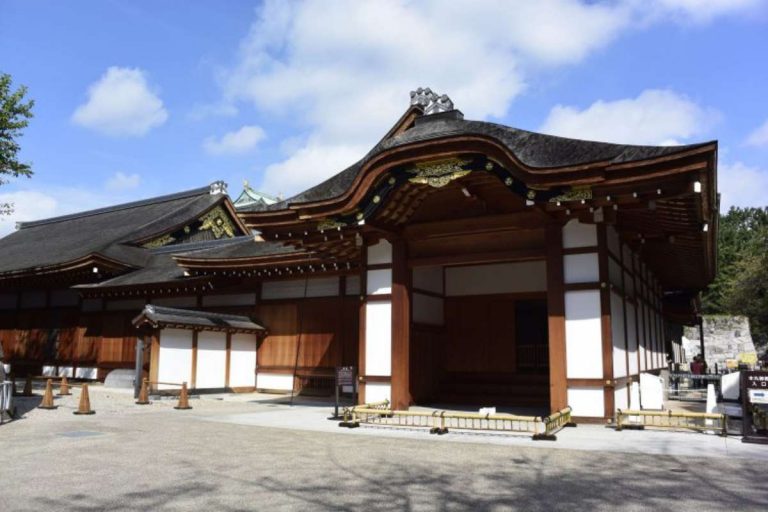
The cypress used for the kurumayose carriage entrance is of such high-quality timber, a single log could build an entire house!
The cypress used for the kurumayose carriage entrance is of such high-quality timber, a single log could build an entire house!After passing through the Omote ni-no-mon second front gate and proceeding between the stone walls, what comes into view is the crown jewel of Nagoya Castle, the Hommaru Palace! Truly resplendent and magnificent! With its grandeur and beauty, it is widely regarded as the finest masterpiece among modern castle palaces.
It was burned down once during World War II, but fortunately detailed architectural drawings from before the destruction survived!
Thanks to that, not only the shape and structure, but even the construction methods and the sources of building materials were faithfully reproduced, allowing the palace to be restored exactly as it was 400 years ago!
And the total construction cost was a staggering…
13 billion yen!!!!
A truly world-class masterpiece!
But it’s not just the exterior that deserves attention. The real charm lies inside. The interiors, prepared to welcome the third shogun of the Edo shogunate, Iemitsu Tokugawa, are dazzling and exquisitely beautiful!
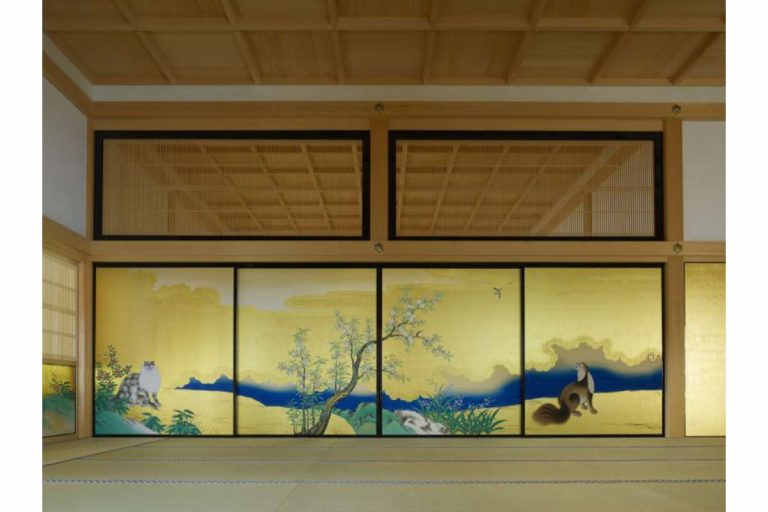
You’ll surely be captivated by everything inside the palace, from the sliding door paintings of tigers and birds-and-flowers, to the ceiling panel art and the gleaming decorative metal fittings.
So when you visit Nagoya Castle, be sure to go inside and take a look.
Got that? You must! No exceptions!
-
Great spot for taking photos of Nagoya Castle.
Now then, before leaving the Hommaru Palace, let me share one more thing with all of you reading this: I’ll reveal a great spot for taking photos of Nagoya Castle.
Instead of turning right at the Hommaru Palace’s Kurumayose carriage entrance, go left!
And what do you know…!
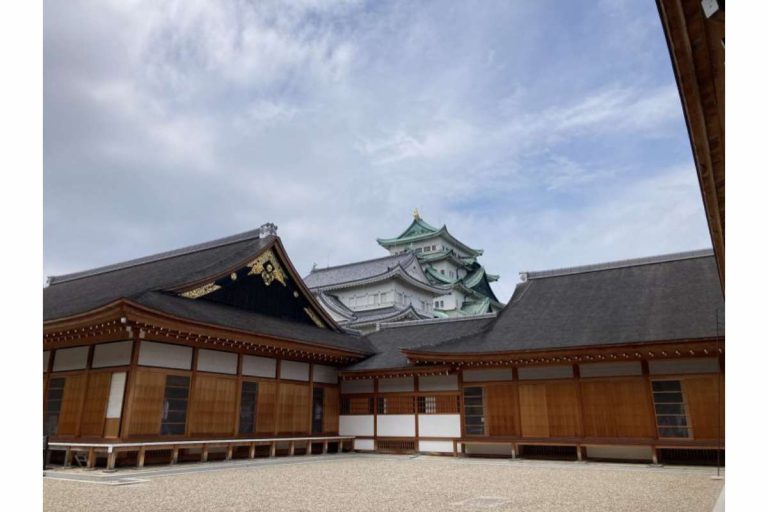
A hidden photo spot, for sure.
From this spot you can capture the Hommaru Palace, the small keep, and the main keep all in a single photo.
How about that? A great spot, right? It’s a bit tucked away and easy to miss, but from there you can take one of the very best photos!
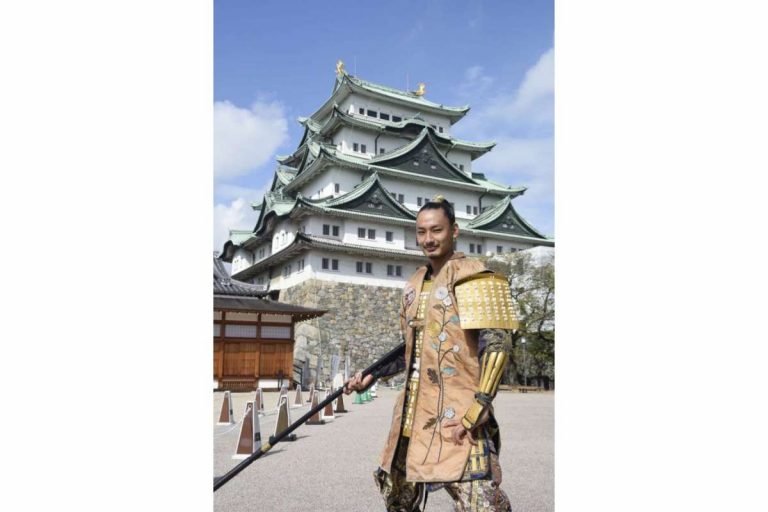
Now, while the highlight of Nagoya Castle is the Hommaru Palace, the symbol of the castle is undoubtedly the tenshukaku, the main tower keep!!
From the top of the stone base, it boasts the tallest height in all of Japan, a majestic figure worthy of a castle of national renown.
At its peak sit the golden kinshachi tiger-fish roof ornaments, the iconic decorations on Nagoya Castle, which sparkle brilliantly and make the castle both grand and elegant.
Supporting the keep is the “Kiyomasa-style crescent stone wall,” built by the famed castle architect Kato Kiyomasa himself. Its graceful curve is a beauty to behold.
At the start of our tour, I mentioned the phrase “Owari Nagoya stands because of its castle,” and now you understand why people say it!!
-
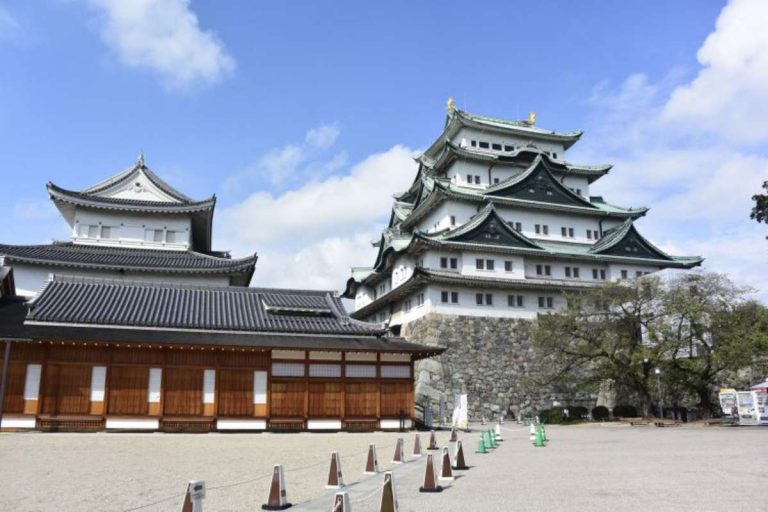
So, how was my tour of Nagoya Castle!?
If it made you want to visit, then nothing could make me happier!
Exploring Nagoya Castle from the perspective of the samurai who once defended or attacked it makes for a fascinating experience as well!
So come and visit at least once, and see it with your own eyes!!
Photos & text by Toshiie Maeda (Nagoya Omotenashi Bushotai)
-
Here we also introduce Japanese castles!

